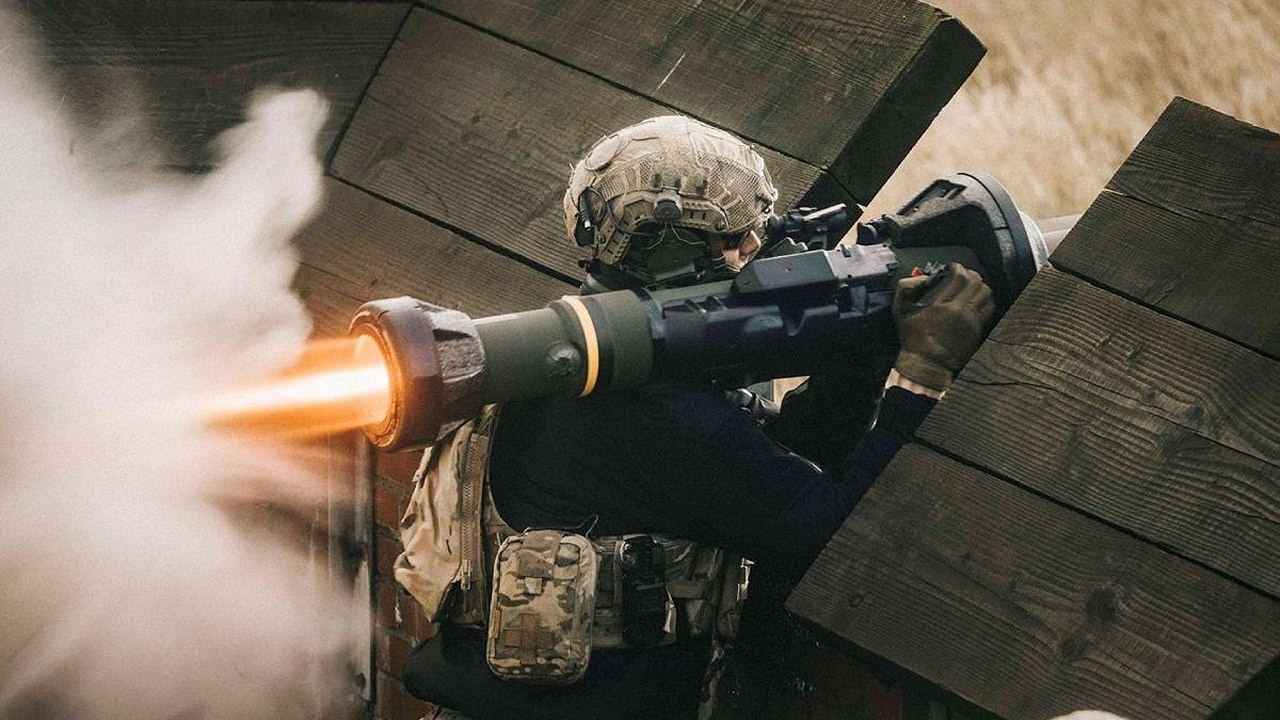NLAW Anti-Tank Missile Primer – The Next Generation Light Anti-tank Weapon, or NLAW, is quickly becoming a symbol of Ukraine’s pugnacious resistance. With Russian casualties mounting, the Ukrainian countryside has become a graveyard of Russian equipment – most notably, husked-out tanks lost to relatively simplistic Ukrainian defenses, particularly the NLAW.
The UK and Sweden split the NLAW’s development costs, with Saab Bofors Dynamics taking the design lead. Beginning in the 1990s, and lasting through 2008, the development phase was prolonged to meet a rigid set of requirements: a maximum weight of 28 pounds, a lowered backblast area, a minimum effective range of 20 meters, and environmental adaptability to enable use in international operations. The result has proven itself as an effective yet affordable weapons system.
Easy to use, easy to transport
United Kingdom’s Defense Minister, Ben Wallace, estimates that Russia has lost upwards of 600 tanks. Of those 600 tanks, the Ukrainians estimate that 30 to 40 percent have fallen to the venerable NLAW. Understandably, the NLAW has become the “weapon of choice” for Ukrainian infantry tasked with tank-killing. The NLAW’s success attributes mainly to the system’s ease of transportation and ease of use.
Weighing just 28 pounds (including a 14 pound missile and 4 pound warhead) the NLAW is a shoulder-launched, single-use missile designed for infantrymen. The NLAW’s “fire and forget” targeting system relies on a Predictable Line of Sight (PLOS) guidance system, which requires limited training to operate. Using the PLOS, an infantryman can simply track a target for three to five seconds through the missile launcher’s onboard sight before firing. Software onboard the missile extrapolates the data gathered during the seconds-long tracking, and plots a prediction of the route, to intercept the moving target. Once fired, an inertial navigation system guides the missile, autonomously, along the preprogrammed flight path towards the target.
The NLAW has two distinct modes: overfly top attack (OTA) and direct attack (DA). For OTA use, the NLAW missile flies one meter above the line of sight, and intersects with the target from above, ideally at a perpendicular angle. OTA relies upon magnetic sensors and a proximity fuze to detonate at a predetermined distance from the target. Proximity fuzes are estimated to be between five and ten times more lethal than a conventional contact fuze, which the NLAW uses while operating in DA mode.
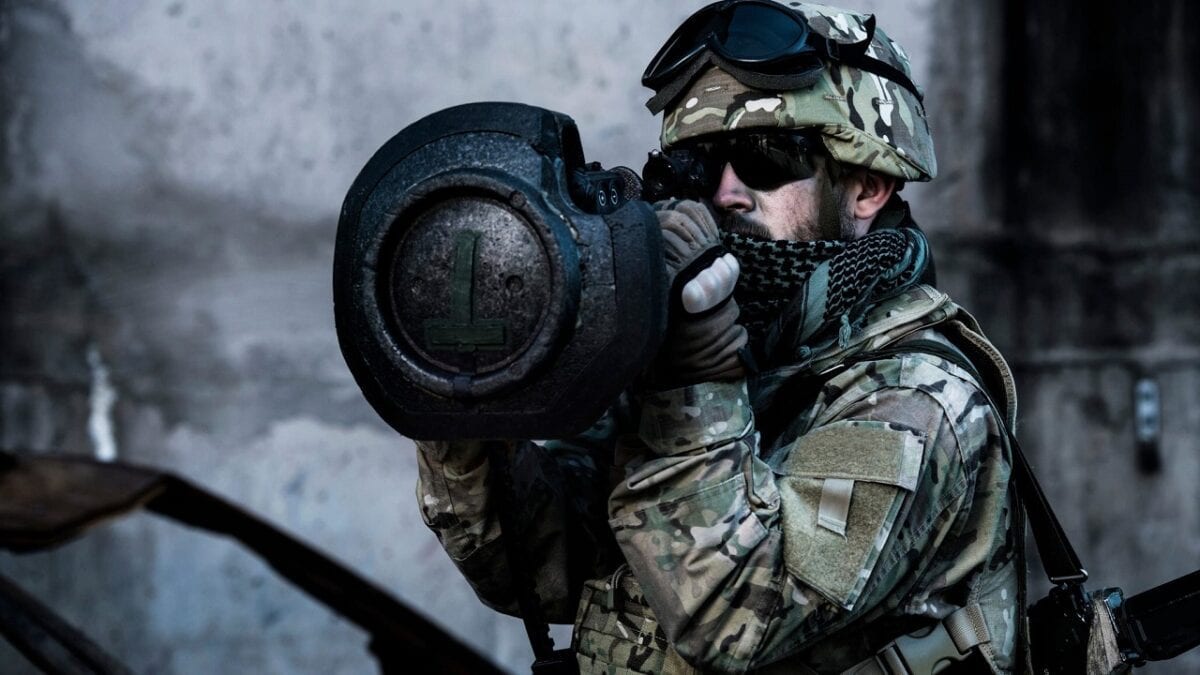
NLAW. Image Credit: SAAB.
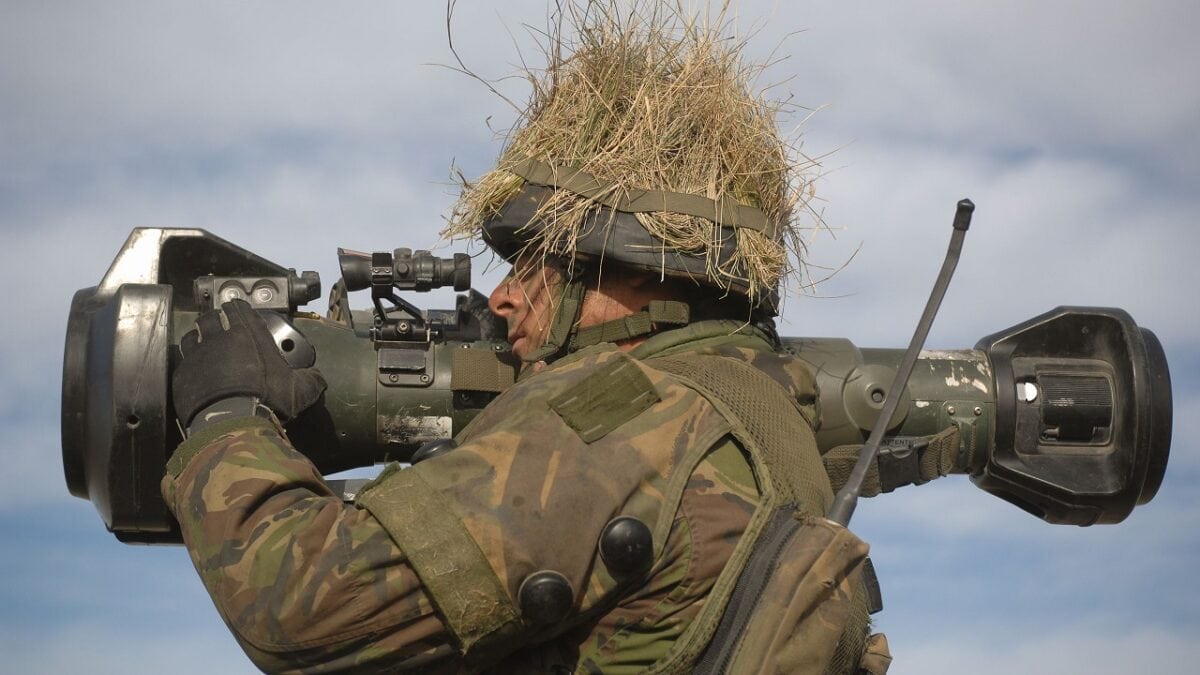
A soldier is pictured aiming a practice NLAW (Next Generation Light Anti-Tank Weapon). This training aid simulates the real NLAW launcher but fires a laser at armored vehicles equipped to receive the beam.
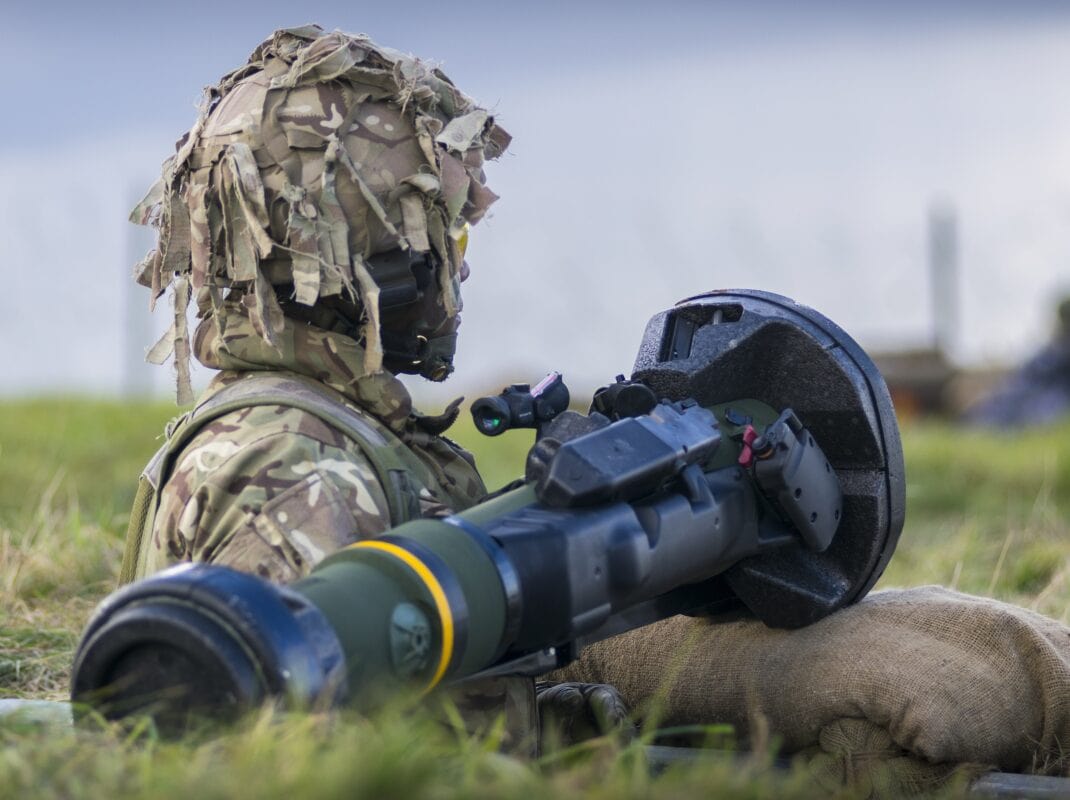
To avoid detonation while flying over non-targets, the NLAW’s missile can be preset to activate only after flying a specific distance. And if the NLAW fails to hit its target, the missile will self-destruct after roughly five seconds of flight time, or 3,300 feet traveled.
A Gift from the British
Ukraine relies heavily upon the United Kingdom for the NLAW. As Russian forces congregated along the Ukrainian border in mid-January, the UK began flying C-17 cargo jets, loaded with ten pallets of misiles each, to Ukraine. To date, the UK has provided over 3,500 NLAWs to the Ukrainians. Additionally, the UK sent 30 paratroopers to train Ukrainian soldiers to operate the shoulder-mounted missile. Undoubtedly, the NLAW was chosen for the speed with which new troops could be taught to use the rudimentary fire-and-forget system. In late March, the British – recognizing the effectiveness of the NLAW during the first month of the Ukrainian crisis – pledged to deliver 6,000 more NLAWs to Ukraine.
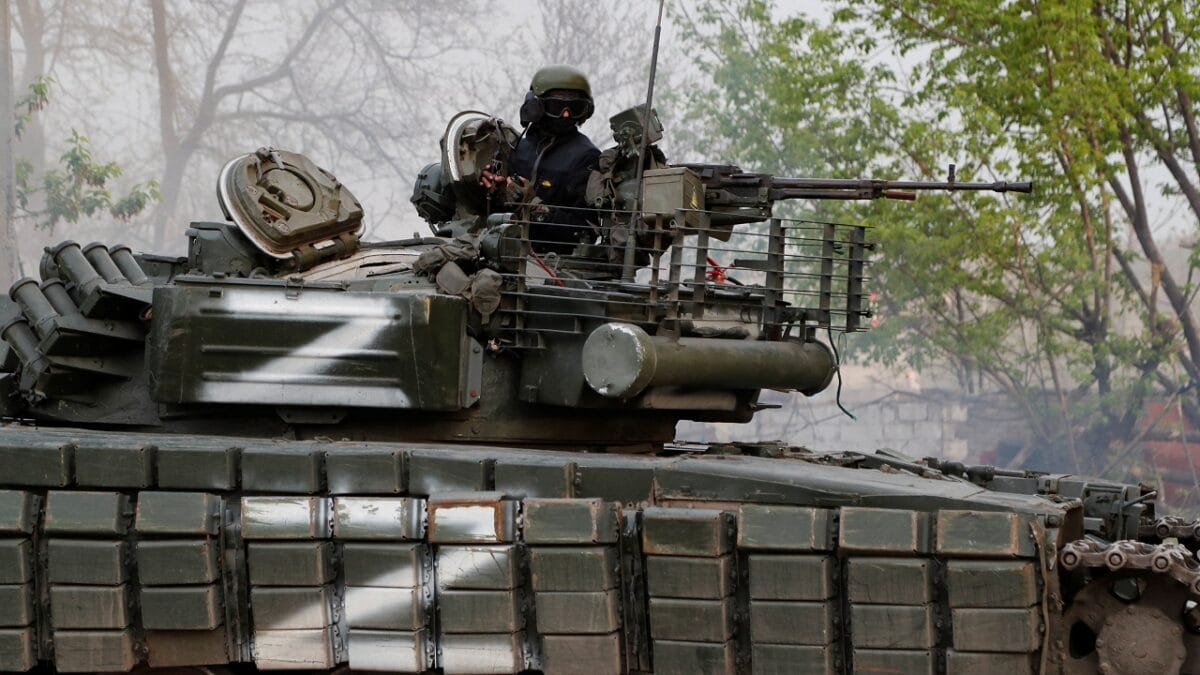
A service member of pro-Russian troops is seen atop a tank during fighting in Ukraine-Russia conflict near the Azovstal steel plant in the southern port city of Mariupol, Ukraine May 5, 2022. Picture taken May 5, 2022. REUTERS/Alexander Ermochenko
Harrison Kass is a Senior Defense Editor at 19FortyFive. An attorney, pilot, guitarist, and minor pro hockey player, he joined the US Air Force as a Pilot Trainee but was medically discharged. Harrison has degrees from Lake Forest College, the University of Oregon School of Law, and New York University’s Graduate School of Arts & Sciences. He lives in Oregon and regularly listens to Dokken.

